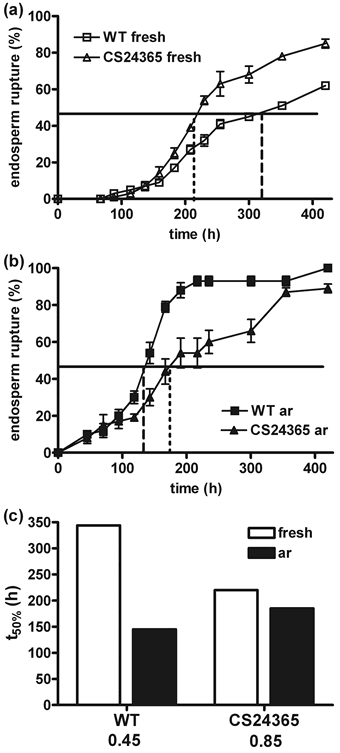New Phytologist 184: 885-897 (2009)
The NADPH-Oxidase AtrbohB plays a role in Arabidopsis seed after-ripening [W]
Centro de Biotecnología y Genómica de Plantas (UPM-INIA), Universidad Politécnica de Madrid, 28223 Pozuelo de Alarcón (Madrid), Spain (M.A.T.)
Received April 30, 2009; accepted July 13, 2009; published online September 15, 2009
DOI 10.1111/j.1469-8137.2009.03005.x
 |
Figure 2. The Arabidopsis enhancer trap Line CS24365 (insertion in AtrbohB) exhibts an after-ripening phenotype: the ABA sensitivity of endosperm rupture does not change during after-ripening. (a) and (b) Germination kinetics of fresh (a) and after-ripened (ar) (b) seeds of WT (squares) and CS24365 (triangles) in the presence of 1 µM ABA. The black line indicates 50 % endosperm rupture, the dotted line connects it to the corresponding times t50% ( CS24365), the dashed line to t50% (WT). t50% represents the time needed to reach 50 % endosperm rupture. Means +/- SE of three times 50 seeds germinated at 24°C in continuous light are shown. (c) Comparison of t50%-values of fresh and after-ripened seeds for WT and CS24365 (AtrbohB insertion mutant). Ratios of t50% (after-ripened) / t50% (fresh) are given below the x-axis. |
| Article in PDF format (440 KB) |
|
|
|
The Seed Biology Place |
Webdesign Gerhard Leubner 2000 |